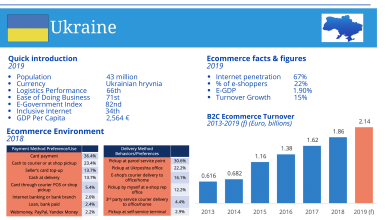Landing your dream job as a Business Analyst (BA) requires more than just completing a business analyst course. Even if the course gives you the fundamental information and abilities, showcasing your skills in a well-made portfolio will greatly increase your chances of landing a job.
This article guides you through the process of building a compelling portfolio that highlights the valuable skills you gained from your business analyst course. We’ll explore what to include, best practices for presenting your work, and valuable tips to make your portfolio stand out from the competition.
Why is a Portfolio Crucial for Business Analysts?
A solid portfolio serves as an effective tool to highlight your problem-solving and practical talents in a competitive employment market. It allows you to go beyond the resume by providing potential employers with tangible evidence of your capabilities learned from a business analyst course.
Here’s how a portfolio benefits aspiring Business Analysts:
- Demonstrates Practical Skills: A portfolio allows you to showcase your proficiency in key BA skills like requirements gathering, process modeling, data analysis, and stakeholder management – all of which you honed during your business analyst course.
- Visualizes Your Work: Resumes can be text-heavy. A portfolio allows you to visually represent your work through diagrams, flowcharts, user stories, and mockups, providing a clearer understanding of your thought process and design skills.
- Compensates for Lack of Experience: New graduates or career changers often lack extensive work experience. A portfolio filled with projects from your business analyst course demonstrates your initiative, problem-solving skills, and ability to apply the knowledge learned.
- Customize Your Application: To make a stronger first impression on prospective employers, you may emphasize certain talents and experiences from your portfolio that are relevant to the position you’re looking for.
What to Include in Your Business Analyst Portfolio
Now that you understand the importance of a portfolio, let’s delve into what you should include to showcase your skills acquired from a business analyst course.
- Project Descriptions:
- Select impactful projects from your business analyst course.
- Provide a concise overview of each project, highlighting the context, problem statement, and your role within the team.
- Briefly describe the methodologies used (e.g., waterfall, agile) and the tools you employed (e.g., UML modeling, data analysis software).
- Focus on the specific tasks you undertook, like requirements gathering, stakeholder communication, or process improvement.
- Deliverables:
- Once you’ve described the project, showcase the tangible outputs you created during your business analyst course.
- This could include:
○ Use case diagrams: Visually represent system functionality and user interactions.
○ Data flow diagrams (DFDs): Illustrate the flow of data within a system.
○ Business requirements documents (BRDs): Clearly define the functional and non-functional requirements of the project.
○ User stories: Capture user needs and functionalities from a user perspective.
○ Mockups or wireframes: Provide a visual representation of the user interface design.
- Ensure your deliverables are well-organized and clearly labeled.
- Case Studies:
- Consider including in-depth case studies for particularly complex projects from your business analyst course.
- Provide a detailed analysis of the problem, your approach, the challenges encountered, and the solutions implemented.
- Quantify the impact of your work whenever possible (e.g., cost savings, efficiency improvements).
- Additional Information:
- Briefly describe your business analyst course and the key skills you learned.
- Include testimonials from instructors or mentors if available.
- Showcase relevant certifications obtained through your business analyst course.
Crafting a Compelling Portfolio Presentation
- Design and Organization:
- Maintain a clean and professional layout with a consistent design theme throughout your portfolio.
- Ensure easy navigation – consider using a table of contents or clear headings.
- Use high-quality visuals and ensure all documents are formatted correctly.
- Focus on Achievements:
- Quantify your achievements whenever possible. Use data and metrics to demonstrate the impact of your work on projects undertaken during your business analyst course.
- Highlight successful problem-solving techniques or innovative solutions developed during your coursework.
- Tailor Your Portfolio:
- Make many versions of your portfolio, each tailored to emphasize the qualifications and experiences that are most pertinent to the particular position you are seeking.
- Focus on projects that showcase the required skills mentioned in the job description.
Pro Tips for Enhancing Your Portfolio
- Prioritize Quality Over Quantity: Focus on including your strongest projects from your business analyst course that effectively demonstrate your capabilities.
- Proofread Meticulously: Ensure your portfolio is free of typos and grammatical errors. A polished portfolio reflects professionalism.
- Consider Different Formats: Explore creating an online portfolio website or using online portfolio platforms. This allows for easy access and updates for potential employers.
- Obtain Feedback: Consult with mentors, professors, or seasoned business analysts for their opinions on your portfolio. You may improve your presentation and draw attention to your advantages by using their ideas.
Beyond the Portfolio: Building a Strong Online Presence
In today’s digital world, building a strong online presence can significantly complement your portfolio. Here are some tips:
- LinkedIn Profile: Create a comprehensive LinkedIn profile that showcases your skills, experience (including projects from your business analyst course), and relevant certifications.
- Professional Website: Consider building a simple website that links to your portfolio and highlights your professional goals as a Business Analyst.
- Participate in Online Communities: Take part in business analysis-related forums and online communities. This gives you the chance to network with other experts, discover market trends, and maybe demonstrate your area of expertise.
By following these strategies and utilizing the valuable skills acquired from your business analyst course, you can build a compelling portfolio that effectively showcases your capabilities and positions you for success in your BA job search. Remember, your portfolio is a dynamic document; update it regularly with new projects and achievements to maintain its relevance and impact.
Conclusion
Crafting a strong portfolio is an investment in your future as a Business Analyst. By utilizing the knowledge and practical skills gained from your business analysis course, you can create a compelling portfolio that effectively communicates your value to potential employers.
Remember, your portfolio is a living document. Continuously update it with new projects, relevant skills, and achievements to showcase your ongoing professional development. With a well-crafted portfolio and a proactive online presence, you’ll be well on your way to landing your dream job as a Business Analyst.
Business Name: ExcelR- Data Science, Data Analytics, Business Analyst Course Training Mumbai
Address: Unit no. 302, 03rd Floor, Ashok Premises, Old Nagardas Rd, Nicolas Wadi Rd, Mogra Village, Gundavali Gaothan, Andheri E, Mumbai, Maharashtra 400069, Phone: 09108238354, Email: [email protected].





